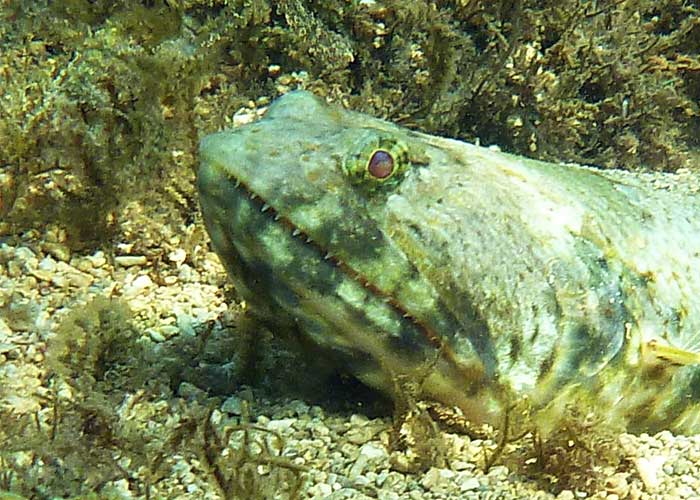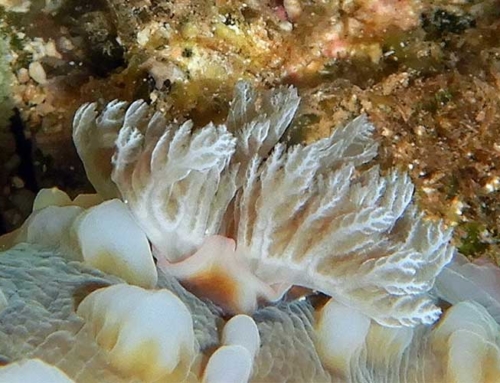I chose this first article because I have history with Lizardfish! In high school, we took weekly field trips as part of my Marine Science class, and the trips included reef walks. On more than one of these reef walks, a lizardfish came darting out at me and swam between my legs, causing me and everyone around me to jump! When I first joined FOWA, I was so happy to reconnect with my Marine Science teacher Alice Roberts, who leads the monthly Native Hawaiian Plants tour at the Aquarium and volunteers at the Edge of the Reef. When I first saw her, I asked, “Mrs. Roberts, do you remember me?” She exclaimed, “Lee! Lizardfish!” To her, I will always be connected to the Lizardfish. – Lee Higa-Okamoto, Executive Director of the Friends of the Waikīkī Aquarium
Lizardfish Below, White Terns Above
Article and pictures from susanscott.net
“Did you see anything?”
A man painting our Waialua apartment building asked me that last week as I headed, dripping wet, with mask, snorkel and fins in hand, toward the door. He added, “I heard there’s not much out there.”
“I saw a lizardfish,” I said.
“What’s that?” he said.
“A fish that looks like a lizard. But without the legs.”
He laughed and he went back to painting.
As I thought about it, though, lizardfish do have legs, sort of. The bottom-dwelling ambush predators sometimes prop themselves up on their stiff lower fins, a way of tilting their pointy heads upward even more to look for prey. This pose, and the reptile-shaped head, is where lizardfish got their name.
A lizardfish’s upraised head sometimes shows a mouth full of sharp teeth, earning these fish the Australian nickname, “grinners.”
Some lizardfish rest on rocks or in rubble, their barred and speckled bodies good camouflage against the backgrounds. Other lizardfish partially bury themselves in sand to hide from passing prey.
Because of this lie-in-wait hunting mode, we snorkelers and divers can often get close to lizardfish without startling them. Sometimes, though, lizardfish startle us. I’ve gulped sea water more than once as a result of a surprise lizardfish lunge. When striking, the well-camouflaged fish can dart up to six feet in a blur of speed.
In one study off Australia’s Lizard Island (named by Captain Cook for its land lizards, not its lizardfish), lizardfish struck every 35 minutes, but missed their marks 89 percent of the time. Even so, the lizardfish averaged a catch of two fish per day.
Hawaii’s Lizardfish range from 6 to 12 inches long. Of the 50 or so species in the world, Hawaii hosts 15. The general Hawaiian name for lizardfish is ‘ulae.
It’s hard to tell species apart, or even to spot one. But lizardfish are abundant off Hawaii’s shorelines, ranging from only a few feet deep to below scuba depths. You have to swim slow and look hard.
When I snorkel or dive with friends, I’m always far behind, because I linger at nooks and crannies, and sometimes, I simply stop and stare at the ocean floor. That’s why, when someone asks me if I saw anything, I always say yes.





